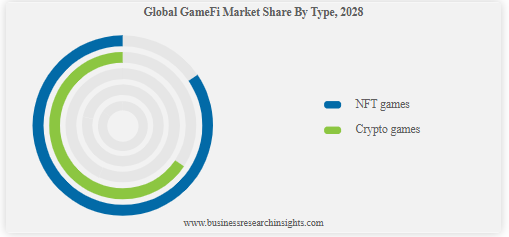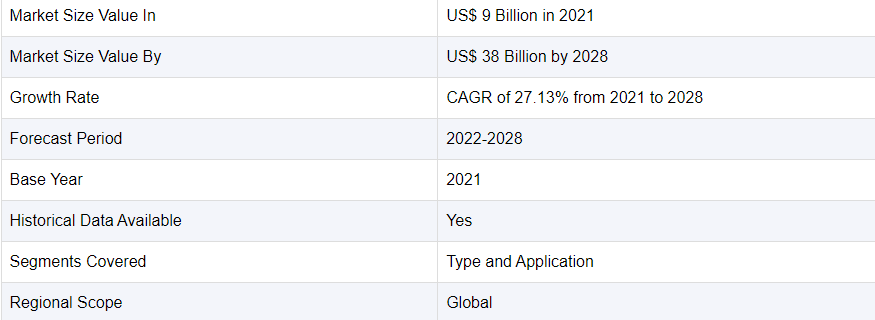Virtual Worlds, NFTs, and GameFi: The Amazing Future Internet Can Change Your Life

The internet has become an inseparable part of our lives, completely altering how we interact with the rest of the world. New technologies, however, such as the Metaverse, NFTs (Non-Fungible Tokens), and GameFi (Game Finance), are rapidly altering the future internet landscape. GameFi particularly has the potential to be the next big thing.

The Metaverse is a virtual world where people can interact with one another, create content, and participate in various activities. It’s a 3D world that combines natural and virtual life, and it’s expected to be the next step in the evolution of the internet. The Metaverse allows people to escape reality and enter a world where they can be whoever they want to be, do whatever they want, and interact with other people in a more immersive way.
NFTs are yet another technology that is sweeping the internet. They are one-of-a-kind digital assets stored on a blockchain that allow people to own and trade special digital items. NFTs can be anything from digital art to virtual real estate, and they’re becoming increasingly popular among collectors and investors.
GameFi is a new concept that combines gaming and finance. It is a decentralized financial ecosystem based on blockchain technology that allows players to earn real money by playing games. GameFi is expected to revolutionize the gaming industry and has the potential to become a multibillion-dollar industry.
1 What Can NFTs do?
2 How GameFi Works
3 Relationship Between NFTs and GameFi
4 Pros and Cons of NFTs and GameFi
5 Some examples of GameFi games and responses from players
6 How big is the GameFi market?
7 Conclusion
What Can NFTs do?
NFTs have certainly gained a lot of traction in the Web3 ecosystem and offer unique opportunities for creators and collectors alike. One of the applications of NFTs is buying and selling custom profile pictures, known as Profile Picture Projects (PFPs).
NFTs can be used as a medium of exchange and ownership for various assets, including physical and digital goods and services.
For example, NFTs can be used as tickets or vouchers for concerts, festivals, and sports games. This allows organizers to create a digital ticketing system that’s more secure and transparent, and it also enables fans to buy and sell tickets on a secondary market without the risk of fraud or counterfeiting.
How GameFi Works
The GameFi ecosystem is built on blockchain technology, allowing users to earn rewards in the form of NFTs after playing. Non-Fungible Tokens are typically in the form of virtual lands, costumes, and weapons, and they play an important role in diversifying user experiences.
Characters in the game are typically NFTs (main or supporting characters). In Stepnm your sneakers are NFTs, and in Cyball, the players are NFTs. These NFTs are typically necessary to play the games and are part of a fundraising campaign. Some compare acquiring NFTs to a token sale without the rules. Users are also rewarded for participating in Play-to-Earn, click-to-Earn, Move-to-Play, Pay-to-Play, and Free-to-Play models.
Nothing is better than being able to pursue your passion as a source of income. This is the top pick for people due to its engaging gameplay and significant [rofits
GameFi has grown in popularity due to its unique economic models, one of which is the play-to-earn (P2E) model. In this model, players can earn NFTs by playing games without spending any money upfront. Users can essentially enjoy playing games while earning valuable NFTs, which they can then trade or sell for real-world currency. This has resulted in the development of a new gaming economy that rewards players for their abilities and time spent playing, rather than just their monetary investment.
Relationship Between NFTs and GameFi
NFTs and GameFi are two concepts that are closely related, as NFTs can play a significant role in GameFi’s economic models.
GameFi, also known as gaming finance, is a new concept that combines gaming and blockchain technology to create new economic models and revenue streams. The play-to-earn (P2E) model is one of the most popular GameFi setups, in which players can earn rewards in the form of cryptocurrency or NFTs by playing games.
Non-fungible tokens, or NFTs, are one-of-a-kind digital assets stored on a blockchain that can represent anything from artwork to in-game items. NFTs can refer to in-game items such as weapons, armor, or skins that can be traded or sold on the blockchain in the context of GameFi.
Developers can use NFTs in GameFi to create a new economy that rewards players for their time and skills, while also allowing them to earn valuable assets that they can later sell or trade. This has resulted in a distinct gaming experience that is more engaging and rewarding for players, as well as the potential for significant revenue for developers and investors.
Pros and Cons of NFTs and GameFi
NFTs and GameFi are relatively new concepts, and they, like any emerging technology or industry, have advantages and disadvantages. Here are some of the most important benefits and drawbacks of NFTs and GameFi:
Pros of NFTs:
- NFTs are unique and irreplaceable digital assets, making them highly valuable to collectors and investors.
- Secure and transparent: Because NFTs are stored on a blockchain, they are extremely fast and transparent, reducing the risk of fraud and counterfeiting.
- NFTs can represent anything from artwork to in-game items, making them versatile tools for a wide range of industries and use cases.
Cons of NFTs:
- Environmental concerns: The process of minting and trading NFTs requires a significant amount of energy, raising concerns about the environmental impact of NFTs.
- Lack of regulation: Because the NFT market is currently unregulated, there is a risk of fraud and scams, and investors must exercise caution when buying and selling NFTs.
- Volatility: The value of NFTs can be highly volatile and fluctuate depending on a variety of factors, including market demand and overall sentiment.
Pros of GameFi:
- GameFi creates a new gaming experience for players that is more engaging and rewarding because they can earn valuable assets while playing games.
- Democratizing: Anyone with a device and an internet connection, regardless of financial situation, can access GameFi, creating new opportunities for people to participate in the gaming economy.
- Innovative: GameFi has the potential to create new revenue streams and economic models for the gaming industry, which can benefit both players and developers.
Cons of GameFi:
- Addiction risk: GameFi can be highly addictive, and some players may devote too much time and money to gaming, negatively impacting their health and finances.
- Lack of regulation: Because GameFi is currently largely unregulated, there is a risk of scams and fraud, and players must exercise caution when using GameFi platforms.
- GameFi may only appeal to a subset of gamers, and some may prefer traditional gaming experiences that do not involve earning rewards or assets.
- Overall, NFTs and GameFi present exciting new opportunities for a variety of industries. Still, as with any emerging technology, it’s critical to carefully weigh the pros and cons and proceed with caution.
Some examples of GameFi games and responses from players
GameFi is a gaming platform that offers players a variety of interactive, competitive games to play. Currently, the platform has four main titles available: “Tribes”, “Golf Rush”, “Dungeon Crawlers” and “Jump Jam”.
In the game Tribes, players are given a complex grid-based map and tasked with conquering as much of it as possible before their opponents do. To take control of regions on the map, they must construct various structures such as castles and fortresses while fending off enemy attacks from other players in real time. The goal is to develop an impenetrable defense while also launching successful offensive operations against other competitors – which becomes increasingly difficult as more players join into the game.
In Golf Rush, a multiplayer online game for up to four people at once, players compete in an infinite golf course where they need to use strategy and skill to best their rivals. On each hole they can select different clubs or items to give them an advantage over their opponents – such as a speed boost or teleport power-up – while also attempting to make par or better before the end of each round.
Meanwhile, in Dungeon Crawlers, gamers are transported into a fantastical world full of text-based adventure challenges along with puzzles and enemies at every turn. As they progress they will gain experience points, unearth valuable loot items and even come across powerful boss monsters on their journey toward becoming one of the most accomplished adventurers in all realms of this virtual universe.
Finally, in Jump Jam, competitors pit their reflexes against each other in fast-paced match-ups consisting of jumping obstacles and collecting coins along the way all against a time limit. The aim is for users to reach the finish line within that timeframe so that they can earn enough points for victory – although be warned that competition does get tougher as you move further along the game track too!
Players have been giving rave reviews about GameFi games since its launch back in 2019; it holds an average user rating of 4.5 stars out 5 on popular review sites like App Annie & Google Play Store. Most reviewers highlight how addicting the games can be due to its strategic depth coupled with attractive visuals and sound effects – plus with frequent updates made by the developers, it looks like GameFi could be one worth keeping an eye out for if you’re looking for some challenging yet enjoyable gaming action!
How big is the GameFi market?
The global market was controlled by North America and this region owns the largest GameFi market share. Due to the increased popularity and the high-speed internet connections, this region to maintain its supremacy for 2023 and beyond. The growing availability of affordable PC/Mac games and Internet streaming services such as Steam, Origin, Battle.net, and others are attracting more gamers to the platform.
Prominent players are making collaborative efforts by partnering with other companies to say ahead of the competition and also, investing in new project launches to expand their product portfolio. Some of the big market players are:
- Gala (India)
- Decentraland (China)
- Animoca (Hong Kong)
- WEMIX (U.S.)
- Radio Caca (U.S.)
- Sky Mavis (Vietnam)
- Illuvium Labs (Sydney)
- Sorare (France)
- PIXOWL (India)
A research survey gives the following data in a report:

Source: Business Research Insights
Conclusion
In conclusion, both NFTs and GameFi are cutting-edge technologies that have the potential to revolutionize the gaming industry and provide players with an experience that is both more engaging and more rewarding. It is important to consider the risks that are associated with these technologies, such as addiction, volatility, lack of regulation, and environmental concerns.




